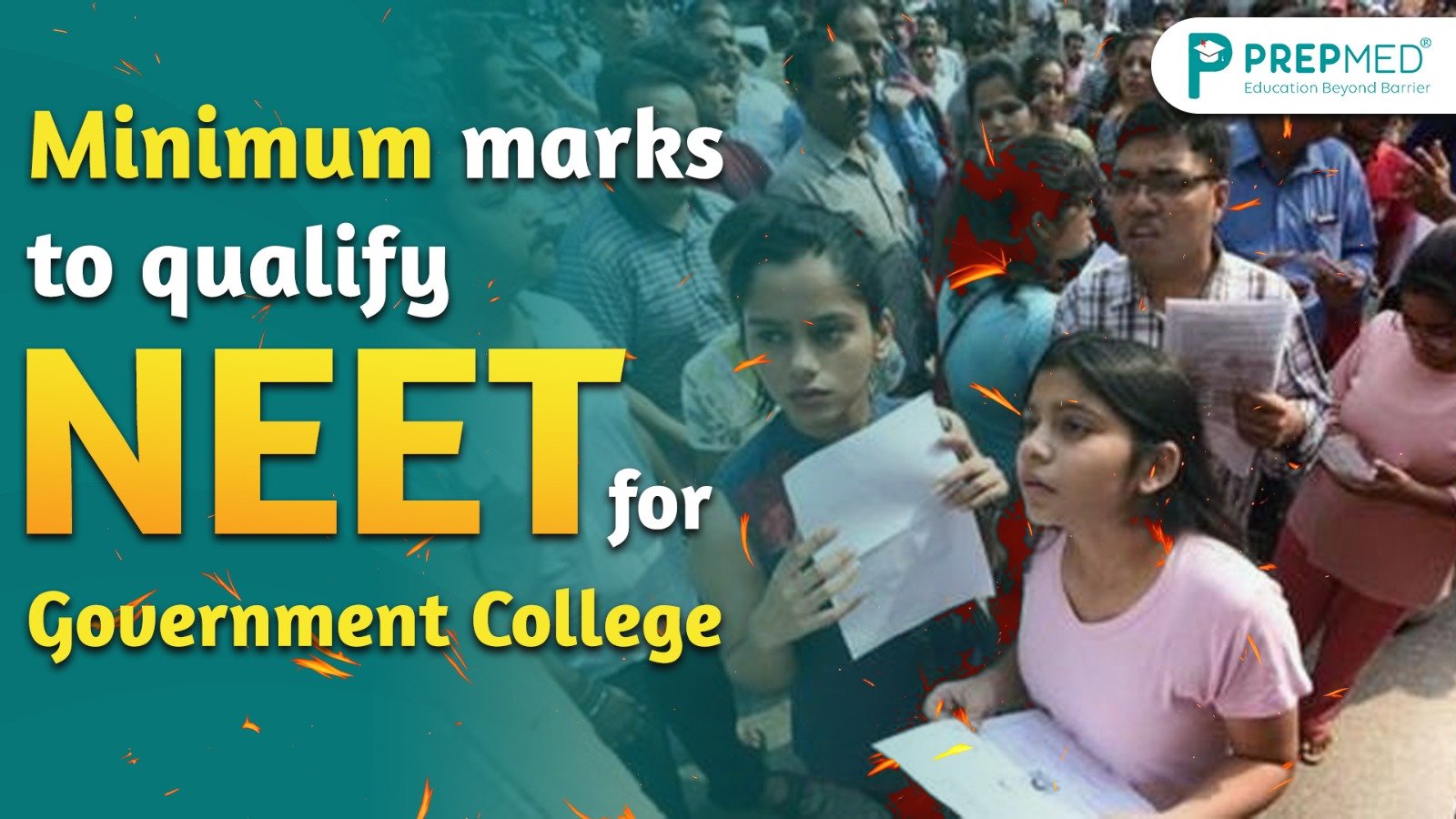August 02, 2025
Minimum Marks to Qualify NEET for Government College: A Realistic Guide
Every year, over 20 lakh students across India take the NEET exam, aspiring to pursue a medical career and wear the prestigious white coat. It is also one of the most competitive and difficult goals, not only emotionally or mentally, but academically too.
Among the hundreds of questions which the students may ask themselves when they are preparing to take the exam, the most significant one is:
What is the minimum marks to qualify NEET for government college?
It is a question that drives aspirants to the day of results. And with a good reason. Getting NEET is one big milestone, but to get admission in a government medical college, and more so in MBBS, is a whole new ball game.
We will demystify everything you should know about NEET qualify criteria, the distinction between eligibility and actual cut-offs, how many students qualified NEET in India, and what the roadmap should be to follow after qualifying NEET in this elaborate guide.
What is NEET and Why It Matters?
Conducted annually by the National Testing Agency (NTA), it is a compulsory requirement for medical admissions in both government and private colleges.
Whether you're applying for MBBS in AIIMS, state government colleges, or BDS seats, your NEET score determines everything. There are no shortcuts, and no second entrance exam. NEET is it.
Understanding NEET Qualifying Marks vs Admission Cut-offs
Let’s first address a common misunderstanding. The term "NEET qualifying marks" is often confused with the marks required for admission into a government college. But these are two different thresholds.
What Are NEET Qualifying Marks?
Achieving the minimum qualifying percentile defined by the NTA is essential for every NEET aspirant. This percentile is based on the performance of all students and the exam’s difficulty level for that year.
Here’s the usual benchmark:
- General Category – 50th Percentile
- OBC/SC/ST Categories – 40th Percentile
- PwD (General) – 45th Percentile
In terms of actual marks, this generally means:
- General – Around 138–140 marks out of 720
- OBC/SC/ST – Around 108–120 marks
However, clearing NEET only grants you eligibility to participate in the counselling process. It doesn’t guarantee admission. In fact, scoring 140 may let you fill out the application forms, but you won’t even come close to a seat in a government medical college unless you score significantly higher.
What is the Minimum Score Needed for a Government MBBS Seat?
Now for the real question: how many marks are required in NEET for a government college?
While the NEET qualifying score is set at around 138, government colleges typically require a score of 550 or above. Let’s break it down further based on recent admission trends and state-wise cut-offs.
For All India Quota (15% Seats)
If you're applying under the All India Quota (AIQ), here’s what you usually need:
- General Category – 610 to 660+
- OBC Category – 580 to 620
- SC/ST Category – 480 to 550
For State Quota (85% Seats)
- Maharashtra, Tamil Nadu, Uttar Pradesh, Rajasthan – Expect a cut-off of 580–620 marks for government MBBS
- West Bengal, Odisha, Himachal Pradesh, Chhattisgarh – Lower cut-offs ranging between 500–550 marks
- Goa, North-East States – May offer government seats around 480–520 marks
Clearly, just qualifying NEET (with ~140 marks) is not going to get you even close to a government seat. If that’s your goal, aim no lower than 600 marks.
How Many Students Qualify for NEET in India?
Here are the numbers to understand the competition:
- In 2024, over 20.4 lakh students appeared for NEET
- Around 11.5 lakh students cleared the qualifying cut-off
- However, only around 55,000 to 60,000 MBBS seats are offered in government medical colleges.
That means only 1 in 5 students who qualify for NEET get into a government medical college. The odds are tough, but with the right preparation and platform, you can beat them.
After Qualifying Neet Exam What To Do?
If you’ve qualified NEET, congratulations! It’s a big achievement. But now it’s time to plan smartly.
Step 1: Check Your Score and Rank
- Log in to the NTA NEET portal
- Download your scorecard
- Write down your AIR and category rank
Step 2: Compare Your Score with Previous Year Cut-offs
- Use PrepMed’s free cut-off tracker
- Check college-wise and category-wise trends
- Evaluate both AIQ and state quota possibilities
Step 3: Participate in Counselling
You can apply under:
- All India Quota (15%) – Centralised by MCC
- State Quota (85%) – Conducted by respective states
- Deemed Universities, Private & AYUSH Colleges – Through separate counselling
Submit your preferences, attend document verification, and prepare for seat allotment rounds.
What are the Best Courses After Qualifying NEET?
Even if your NEET rank doesn’t land you an MBBS seat in a government college, don’t lose hope. There are several other rewarding paths you can take:
- BDS (Bachelor of Dental Surgery) – Highly respected, especially for surgery-focused aspirants
- BUMS (Unani), BHMS (Homoeopathy) – The demand for this course is growing under AYUSH ministry
- B.Sc Nursing, BPT (Physiotherapy), Radiology, Optometry – Ideal for those who want to stay in healthcare
- Private MBBS Colleges – If affordability isn’t an issue, some private colleges have excellent infrastructure.
Your NEET qualification opens many doors; explore them all with clarity, not fear.
How to Qualify NEET with a Score for Government College?
If you’re still preparing or planning a second attempt, here’s how to set your sights on 600+:
1. Master NCERT Thoroughly
Around 70 to 80% of the questions in the NEET exam are either directly picked from or closely related to the concepts covered in NCERT books. Don’t skip even the diagrams and footnotes.
2. Practice with Precision
Use high-quality MCQ banks, past year papers, and PrepMed’s practice tests to sharpen accuracy and timing.
3. Take Regular Mock Tests
Simulate real exam conditions. Track performance. Improve weak areas.
4. Use Expert Support
PrepMed’s mentorship, live classes, and personalised test analytics help you study smarter, not just harder.
Conclusion
The minimum marks to qualify NEET for government college are not just numbers. They represent the culmination of years of dedication, sacrifice, and effort. If you’ve already qualified NEET, congratulations, you’ve crossed the first major milestone in your medical career. But if your goal is a government MBBS seat, now’s the time to push harder.
With the right platform, focused prep, and a winning mindset, you can stop asking “What are the minimum marks to qualify NEET for government college?” and start preparing for your first day in one.
Join PrepMed now and get everything you need to crack NEET with confidence.
Also read:
Lowest Cut Off Government Medical Colleges in India
Top government medical colleges in India for MBBS - rank wise
Best Medical Colleges in India 2025: Govt & Private Options






